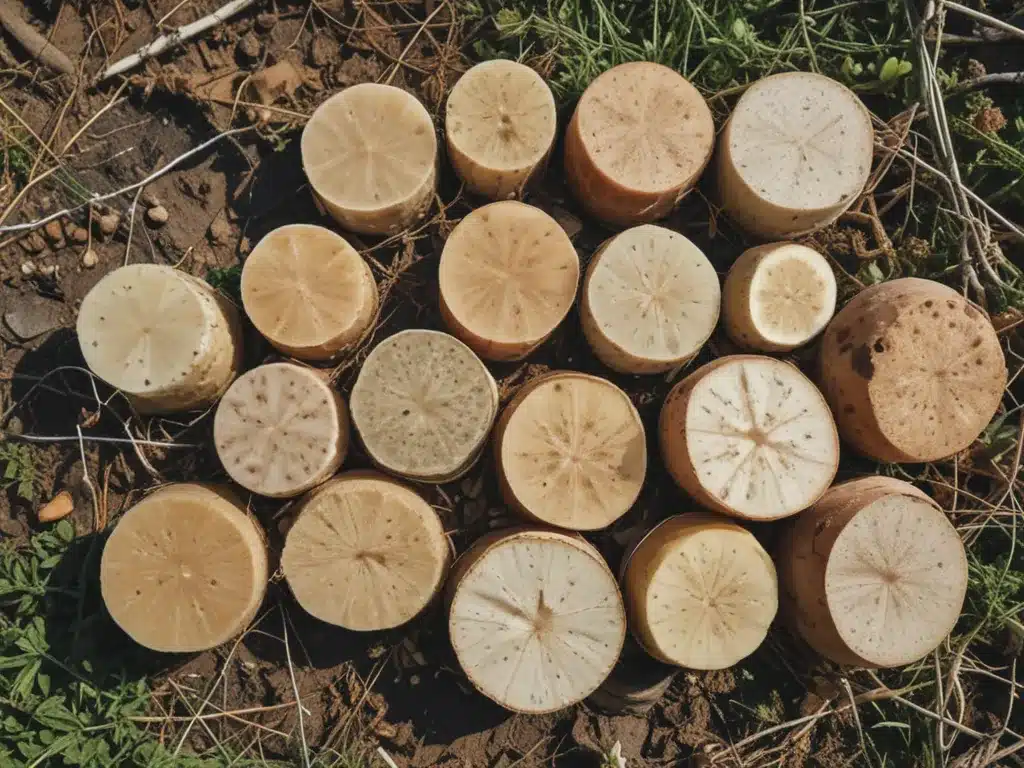
Introduction
I have become quite interested in exploring wild fermentation techniques using locally foraged yeasts. As someone new to this practice, I wanted to learn more about how I can source yeasts in my own backyard and neighborhood to create unique fermented foods and beverages. In this article, I will share what I have discovered so far about foraging for local yeasts and using them for wild fermentation projects.
What is Wild Fermentation?
Wild fermentation refers to the practice of harnessing ambient yeasts and bacteria to ferment foods and beverages, rather than relying on specific commercial starter cultures. Yeasts and bacteria are microbes that occur naturally in the environment around us. With some foraging and experimentation, we can capture these local microbes to kickstart the fermentation process.
The key benefit of wild fermentation is that it allows us to create truly local products that reflect the native microbial terroir of our homes and communities. No two wild ferments using locally caught microbes will be exactly the same. This leads to unique flavors and complexity in the final product.
Why Forage for Local Yeasts?
There are a few key reasons why I wanted to start foraging for my own yeasts rather than buying commercial starters:
- Novel flavors: Local yeasts impart distinctive regional flavors to ferments based on your environment. This can result in complex and nuanced tastes.
- Sustainability: Foraging yeast reduces reliance on commercial products and makes use of microbes already present in my surroundings.
- Experimentation: Playing with local yeasts allows for creativity and surprises during fermentation. Each batch can turn out differently.
- Connection to nature: Harvesting local yeast helps me feel more connected to the microbial world around me and my regional terroir.
Where to Forage for Wild Yeast
Fruit skins – The waxy skin layer of fruits often harbors various yeasts and bacteria that aid in fermentation. Grapes, berries, apples, and stone fruits offer good wild yeast sources.
Tree bark – Certain tree species like oak, cherry, and apple tend to harbor wild yeasts on their bark that can be harvested. Scrubbing off some of the outer bark exposes these yeasts.
Root vegetables – Starchy root veggies like potatoes, carrots, and beets carry ambient yeasts and bacteria from the soil they are grown in. These can be harnessed for fermentation.
Backyard flowers – Yeasts and bacteria live on the petals, stems, and leaves of many garden flowers and herbs. Dandelions, roses, and elderflowers are great wild yeast sources.
Honeycombs – Bees help deposit yeasts and bacteria within their honeycombs. These microbes can be extracted for fermentation projects.
How to Harvest Wild Yeast
Harvesting local wild yeast for fermentation takes some trial and error, but can yield exciting results. Here is an overview of the basic process:
Select a Source
Choose a promising yeast source from your backyard or neighborhood. Fruit skins, flowers, and tree barks tend to be reliable places to find yeast.
Sanitize Equipment
Thoroughly wash and sanitize any utensils, knives, and collection jars you will use. This prevents unwanted bacteria from contaminating your yeast sample.
Collect the Sample
Gently scrub, peel, or tap your source to procure a yeast sample. For example, you could collect fruit skin scrapings, flower petals, or tree bark flakes. Gather the sample in sterile jars.
Make a Starter
Combine the yeast sample with some flour and water in a jar to cultivate the yeast. Let this starter sit for a few days until bubbly and active. Then you can use the starter to inoculate fermentation projects!
Feed and Maintain the Starter
Keep the starter healthy by discarding half and refreshing with new flour and water every week. The yeast should remain viable for months.
Ideas for Using Foraged Yeast
Once you have harvested and propagated a local yeast starter, the possibilities for wild fermentation projects are endless! Here are some ideas:
-
Sourdough bread – Foraged yeast starters create wonderfully tangy and complex sourdough loaves. The local yeasts lend a true sense of place to homemade bread.
-
Fruit wines – grapes, berries, stone fruits, and apples fermented with native yeasts make for distinct seasonal wines.
-
Root vegetable kvass – Beet, carrot, or potato kvass get lively flavor notes from wild yeast and bacteria.
-
Seeded cheese – Mix foraged yeasts into home cheesemaking recipes for unique flavors.
-
Kombucha – Create a bubbly kombucha scoby using wild yeasts and local tea. The fermentation will reflect your native environment.
-
Ginger bug – Cultivate a homegrown ginger bug starter using foraged yeast to make probiotic sodas and tonics.
No matter which wild fermentation project you tackle, embrace creativity and enjoy the locally distinctive results!
Key Tips for Success
Based on my initial foraging experiments, here are some helpful tips to get the best results when working with harvested wild yeasts:
-
Test multiple yeast samples and starters to determine which has the strongest activity.
-
Expect greater variability in fermentation time compared to commercial yeasts.
-
Start with a simple tried recipe before experimenting with entirely new wild creations.
-
Sanitize equipment and jars thoroughly to prevent contamination of your foraged yeast.
-
Maintain a regular feeding schedule for your starter to keep yeast healthy and active over time.
-
Keep detailed notes on your wild yeast starters and fermentation batches to track the microbial variables.
Conclusion
While foraging and harnessing local yeasts takes patience and creativity, it unlocks a world of possibilities for unique home ferments that connect back to your own regional terroir. I am excited to continue experimenting with wild fermentation using yeasts sourced right from my surroundings. The complex flavors and active cultures that emerge from local microbial alchemy make the effort well worth it. Where will your foraged yeasts take you on your wild fermentation journey?



















